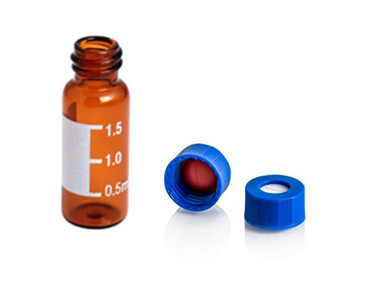Different Types of Vials for HPLC and LC-MS
Feb 26th 2023
See our vial options here! www.maxisci.com/hplc-accessories/vials-and-caps/
High-performance liquid chromatography (HPLC) and liquid chromatography-mass spectrometry (LC-MS) are powerful analytical techniques that require precise sample preparation and handling. One crucial aspect of this process is the selection of appropriate vials for sample storage and injection. In this blog post, we will explore the different types of 2mL vials that you can use for HPLC or LC-MS.
- Glass vials: Glass vials are the most commonly used vials for HPLC and LC-MS. They are made of borosilicate glass, which is resistant to thermal shock and chemical corrosion, making them ideal for storing and transporting sensitive samples. Glass vials are available in different sizes, shapes, and colors, making them suitable for various applications.
- Plastic vials: Plastic vials are an excellent alternative to glass vials. They are lightweight, shatterproof, and resistant to breakage. Plastic vials are also available in different colors, which can help to minimize sample degradation by light exposure. However, plastic vials may not be suitable for certain types of solvents or samples.
- Silanized vials: Silanized vials are glass vials that have been treated with a silane compound. This treatment reduces the surface tension of the glass, making it hydrophobic and reducing adsorption of the analytes onto the vial surface. Silanized vials are particularly useful for samples that are prone to adsorption or degradation, such as peptides and proteins.
- Screw top vials: Screw top vials have a threaded top that provides a secure seal and prevents leakage. They are available in both glass and plastic, making them suitable for a wide range of applications. Screw top vials are particularly useful for automated sample handling, as they can be easily opened and closed using a robotic arm.
- Crimp top vials: Crimp top vials have a flanged top that is crimped onto the vial using a crimping tool. This provides a tight seal that is less prone to leakage than screw top vials. Crimp top vials are commonly used for volatile and semi-volatile samples that require a secure seal to prevent evaporation.
- Pre-slit septum vials: Pre-slit septum vials have a septum that is pre-slit to allow for easy needle penetration. This reduces the risk of damage to the septum and improves the accuracy and precision of injection. Pre-slit septum vials are particularly useful for high-throughput applications.
In conclusion, the choice of vial for HPLC or LC-MS depends on the specific requirements of the application. Glass vials are the most common choice, but plastic vials, silanized vials, screw top vials, crimp top vials, and pre-slit septum vials can also be used depending on the nature of the sample and the analysis being performed. By selecting the appropriate vial, you can help to ensure accurate and reliable results in your HPLC or LC-MS analysis.

